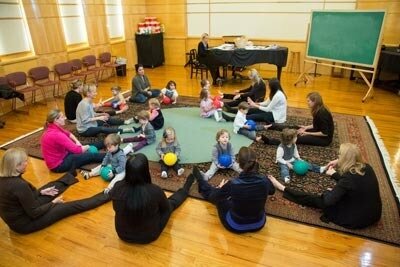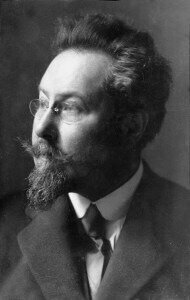 Having already outlined the benefits of the more developmental type of music education known as Dalcroze Eurhythmics in an earlier article, I wanted to discover more details about this approach. Chui Tan Lee, a dedicated violin teacher based in Hong Kong who incorporates ideas of the Dalcroze method in her classes and is training to be a qualified Eurhythmics teacher, tells me about her own musical journey.
Having already outlined the benefits of the more developmental type of music education known as Dalcroze Eurhythmics in an earlier article, I wanted to discover more details about this approach. Chui Tan Lee, a dedicated violin teacher based in Hong Kong who incorporates ideas of the Dalcroze method in her classes and is training to be a qualified Eurhythmics teacher, tells me about her own musical journey.
When did you first come across this teaching method? Was there a particular event that inspired you?
After leaving the Hong Kong Philharmonic in 1999, I was interested in exploring different forms of music-making. I had learnt Baroque violin, country fiddling, and even some jazz… One day, a friend showed me some Eurhythmics exercises using balloons as props! I thought it was quite fun, and subsequently ended up doing a summer course at Longy School in Cambridge, Massachusetts. However, once I was there, I found it quite intimidating. I was always slightly awkward physically, perhaps because of being left-handed… And most of the activities at Longy had to do with doing two or three different things simultaneously… So I gave up the idea of pursuing it further.
Several years later, I accepted a young student who just came from New York City. During the first few months with me, I was amazed by her sensitivity to musical sounds and phrases. Above all, she was able to understand complicated rhythms and play these on the violin. I asked the mother if the child played any other instruments or if she had been to other music classes, and was told that the only special musical activity she did was attending a course in New York in which the students played a lot but was also having a lot of fun. And that was Eurhythmics!
I understand you are now pursuing this seriously in order to get the relevant qualification(s). Can you tell us about the work involved in the training?
There are several places where one can take the Dalcroze certificate exams; I am currently taking those under the Dalcroze Society UK. The certification exams are divided into 3 levels: Foundation, Intermediate and Certificate. The Foundation and Intermediate levels, each consist of 4 parts: rhythmics, improvisation, aural, and written work. The Certificate level includes an additional teaching exam.
It is very important to have as much training as possible to fully prepare for the exams. I have been taking courses in Boston, Pittsburgh, Taipei, Canterbury (UK) and Geneva on a regular basis until the Dalcroze Society in HK started inviting teachers to give workshops here in 2009. The training involves 3 branches of the method: rhythmics (trains the body to express and be sensitive to music); solfege (both aural training and singing); and improvisation (improvising with the voice, the body, and your instrument). Although each branch has specific goals, the training is interrelated. For example, whilst training in rhythmics focuses on the flexibility and sensitivity of the body to the music, some solfege and improvisation techniques will also be incorporated into the process.

Émile Jaques-Dalcroze
Swiss composer, music educator and developer of the Eurhythmics method of learning and experiencing music through movement.
When I am training in or teaching Eurhythmcis, I feel like the music comes alive and I am living ‘inside’ the music. It is exactly the optimal experience the author Mihaly Csikszentmihalyi wrote about in his book ‘Flow: The Psychology of Optimal Experience’…
One of the hardest parts of learning Eurhythmics ‘long-distance’ is finding the time and the group to train together. Eurhythmics training also emphasises social interaction and group awareness, thus I have to constantly fly somewhere to try to get together with fellow Eurhythmics practitioners.
Can you give us an example of how Eurhythmics can help a child?
Eurhythmics can help in so many ways, but for me, one of the most obvious examples is how it can help left-handed people. As a left-handed person/violinist myself, I was very accident prone growing up and had great difficulties with bowing, without realising the fundamental problem was being left-handed. Ever since I started the training, I have become more synchronised physically. I have noticed the same with my left-handed students as well. We live in a world catered for right-handed people, from the way doors are made to open and to the position of the ticket reader on turnstiles at train stations; left-handed people have to constantly adjust. Eurhythmics trains the body to be more flexible and alert so these everyday adjustments become less awkward and troublesome. For left-handed violin students, I use rhythmics exercises to help them develop their small muscle groups in their right arms so that they can control the bow better.
What typically happens during a Eurhythmics class?
We start with a warm-up exercise, which can range from sitting still and listening to music, to running around the room [to music]. Then I either review a topic from the previous week with a few exercises, or introduce a new topic. The exercises usually involve movement, singing and listening. We finish off with a piece of music that shows elements of the new topic and we move to it.
What do you think are the funniest parts of teaching Eurhythmics? Any anecdotes you would like to share with us?
Creating activities for each class is for me the funniest and yet the most challenging part of teaching Eurhythmics. As the dynamic of each class is different, I constantly have to tailor-make different activities to challenge the kids – there is no ‘one size fits all’! Sometimes, I would only realise during the class that what I had in mind would not work, and would then have to improvise another activity on the spot.
This does sound quite tough and time-consuming in terms of preparation work, though I suppose it makes teaching more interesting and keeps you on your toes! How do you group the kids? Is it by age, or by skill level of instruments?
I group them by similar age and level of instruments. Most kids come to me for one private lesson and one group class in which I use Eurhythmics activities to enhance their listening skills and help them understand the different elements of a piece of music.
Eurhythmics classes seem to involve a lot of physical movement and coordination as well as expression of feeling. As the teacher, how do you keep the kids in control whilst not limiting their expression?
That is a problem in Hong Kong. Kids here don’t have much room or time to move, so when they get given the freedom and space to move, they do tend to run wild for a bit! It depends on the class… If they are very hyper, I let them run around for a while, and will gradually add music to their running and then challenge them to follow the music.
Is Eurhythmics beneficial for everyone, or do you think a certain age group benefits more from it?
Definitely. It is through Eurhythmics that I finally understood the ‘language’ of music. It is also used widely in the medical field to help patients recover from illnesses; senior citizens also get much joy out of a Eurhythmics class. It also helps many music students to understand better what they are playing [because the music gets dissected into different components and they get to feel and experience each of them].
In the goal-driven, exam-oriented society that is HK, how do you convince parents that Eurhythmics will help children?
I believe this is the perfect balance to all the pressure children in HK face today. It is a place where they can express their feelings and test their creative skills in a safe environment.
2013 Dalcroze Eurythmics class – Continuous Canon




